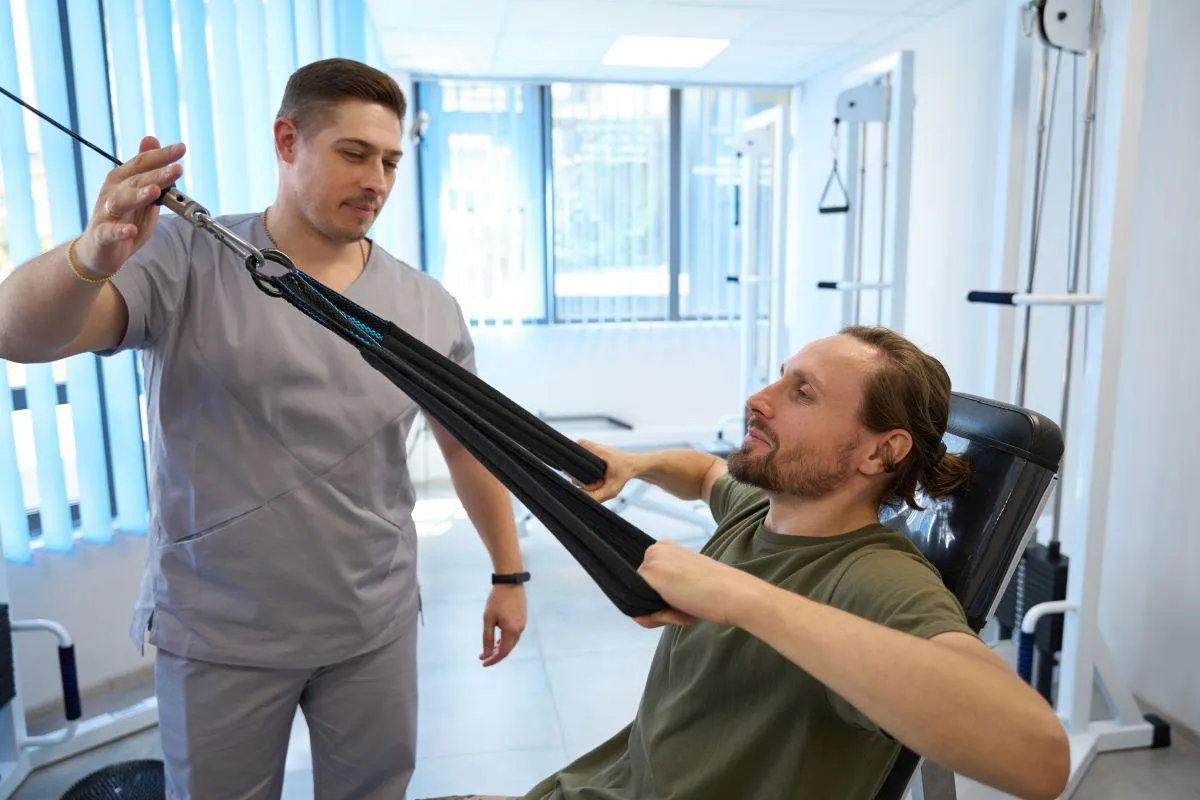
Bridging the Gap: Bringing Motivation Back to Rehabilitation
Moving Beyond the Limits of Traditional Rehabilitation
Rehabilitation is about more than regaining strength or mobility—it’s about helping patients reconnect with their sense of agency, purpose, and hope. Whether someone is recovering from surgery, navigating the long journey of stroke or traumatic brain injury (TBI) recovery, or working to develop essential motor and cognitive skills in childhood, the greatest challenge is often keeping them engaged through the process.
Therapy can be hard work. It can be repetitive. And for many patients, it can trigger frustration, fear, or fatigue—especially when traditional clinical environments feel cold, intimidating, or uninspiring.
That’s where Bridge by Sphere makes an extraordinary difference.
Bridge creates immersive, interactive spaces where patients don’t just perform therapy—they actively engage in it. By transforming floors, tables, or beds into motion-responsive environments, Bridge helps bridge the gap between clinical progress and human connection, making therapy feel motivating, rewarding, and even joyful.
In this article, we’ll explore how Bridge supports:
Patient participation and motivation
Neurological and physical rehabilitation
Emotional regulation and pre/post-procedure calming
Cross-disciplinary therapy goals
And most importantly, how it brings humanity and dignity back into the rehab experience.
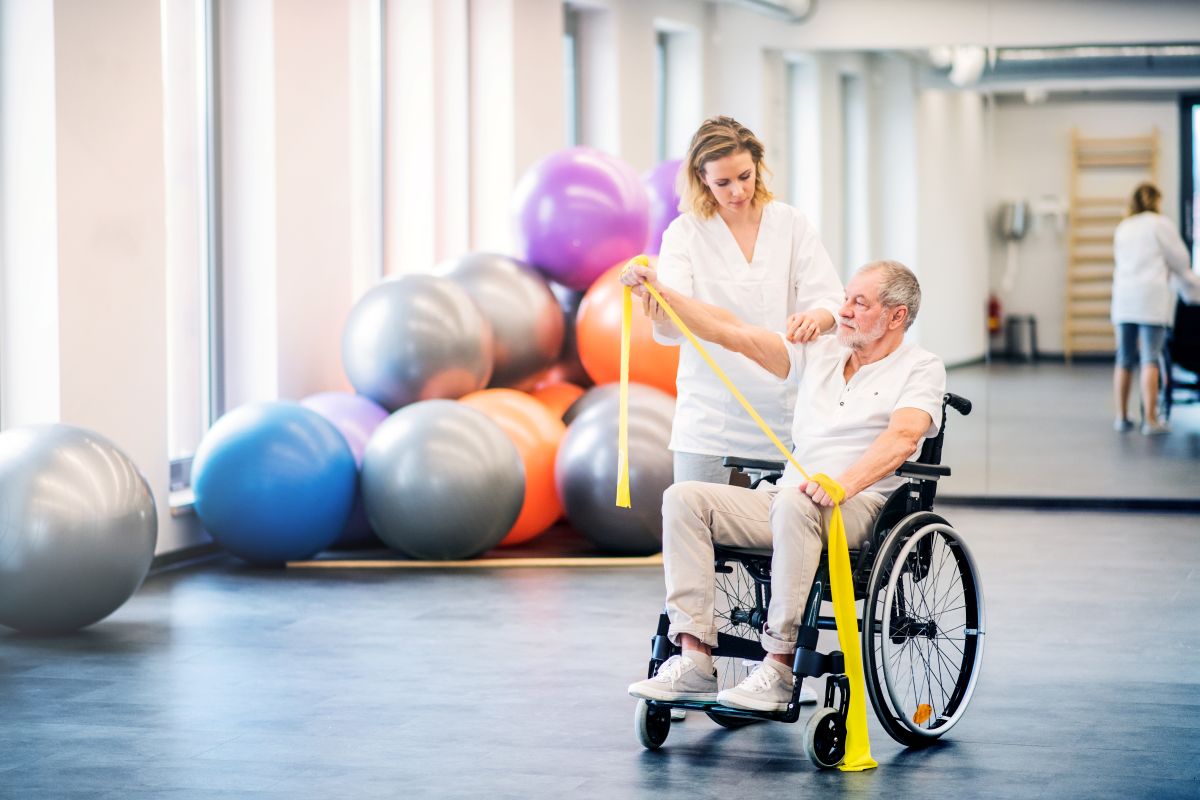
The Engagement Gap in Rehabilitation Programs
Despite the extraordinary advances in modern rehabilitation, one truth remains universal: therapy only works when patients are motivated to participate. Even in the most innovative clinics, engagement can be the missing link between a plan on paper and real progress in the gym, therapy room, or bedside.
Many patients experience rehabilitation as a series of repetitive, often tedious exercises. Over time, this can lead to:
Boredom and disengagement, especially when therapy feels disconnected from daily life.
Anxiety or resistance, particularly before procedures or when facing unfamiliar equipment.
Cognitive fatigue, which is common in stroke and TBI recovery, reducing focus and willingness to try.
Emotional shutdown, where patients become passive rather than active participants in their own care.
These barriers don’t just slow recovery. They also create stress for clinicians and caregivers who spend valuable time encouraging patients to start—and stay engaged with—therapy tasks. For children and older adults alike, a lack of motivation can mean more appointments, longer hospital stays, and diminished confidence in the rehabilitation process itself.
The question is simple, but powerful: What if therapy could feel less like a chore and more like an experience patients wanted to return to?
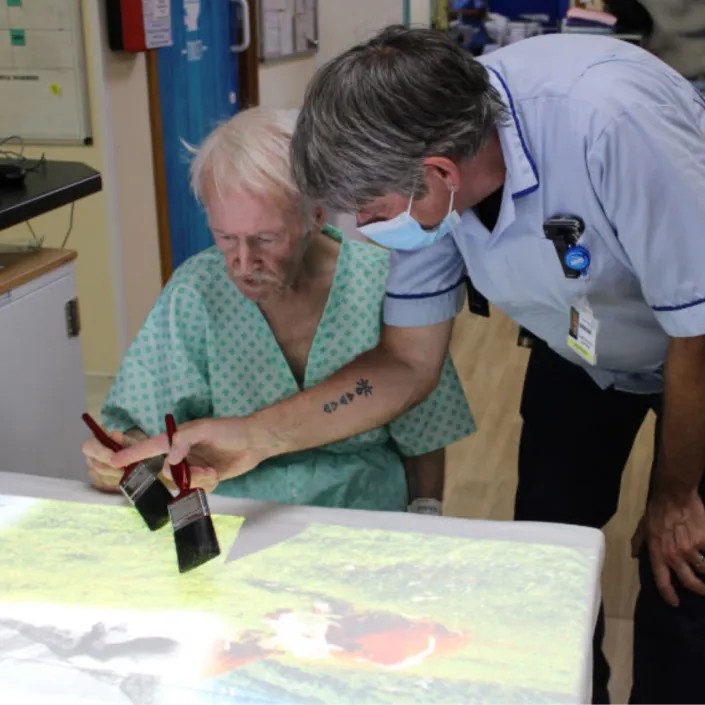
How Interactive Visuals Bridge the Gap Between Therapy and Motivation
Rehabilitation isn’t just about repetition—it’s about helping patients rediscover the confidence and curiosity that fuel progress. For many, however, therapy can feel like a checklist of motions to complete, rather than an experience worth engaging in. That’s where interactive projection creates a powerful shift.
Bridge by Sphere is designed to turn therapy from a passive routine into an active, motivating experience. Unlike traditional tools—parallel bars, foam blocks, static games—Bridge uses motion-activated visuals to create environments that respond to every gesture, no matter how small. When a patient reaches, leans, or takes a step, the system comes alive: flowers bloom, colors swirl, or pathways light up to guide movement.
This transformation does more than entertain:
It reinforces purposeful movement by linking motor actions to visual feedback.
It stimulates cognitive pathways essential for neurological recovery.
It builds emotional investment in therapy by making progress feel visible and rewarding.
Whether a child is practicing balance after orthopedic surgery or an adult is retraining coordination after a stroke, interactive visuals reduce resistance and spark participation—the two keys to effective rehabilitation.
Bridge empowers therapists to deliver sessions that are:
Personalized to each patient’s goals and mobility level.
Adaptable across disciplines (PT, OT, pediatric therapy, neurological rehab).
Flexible enough to be used in any space, from treatment rooms to bedsides.
Because when therapy is engaging, patients are more likely to try, repeat, and succeed.
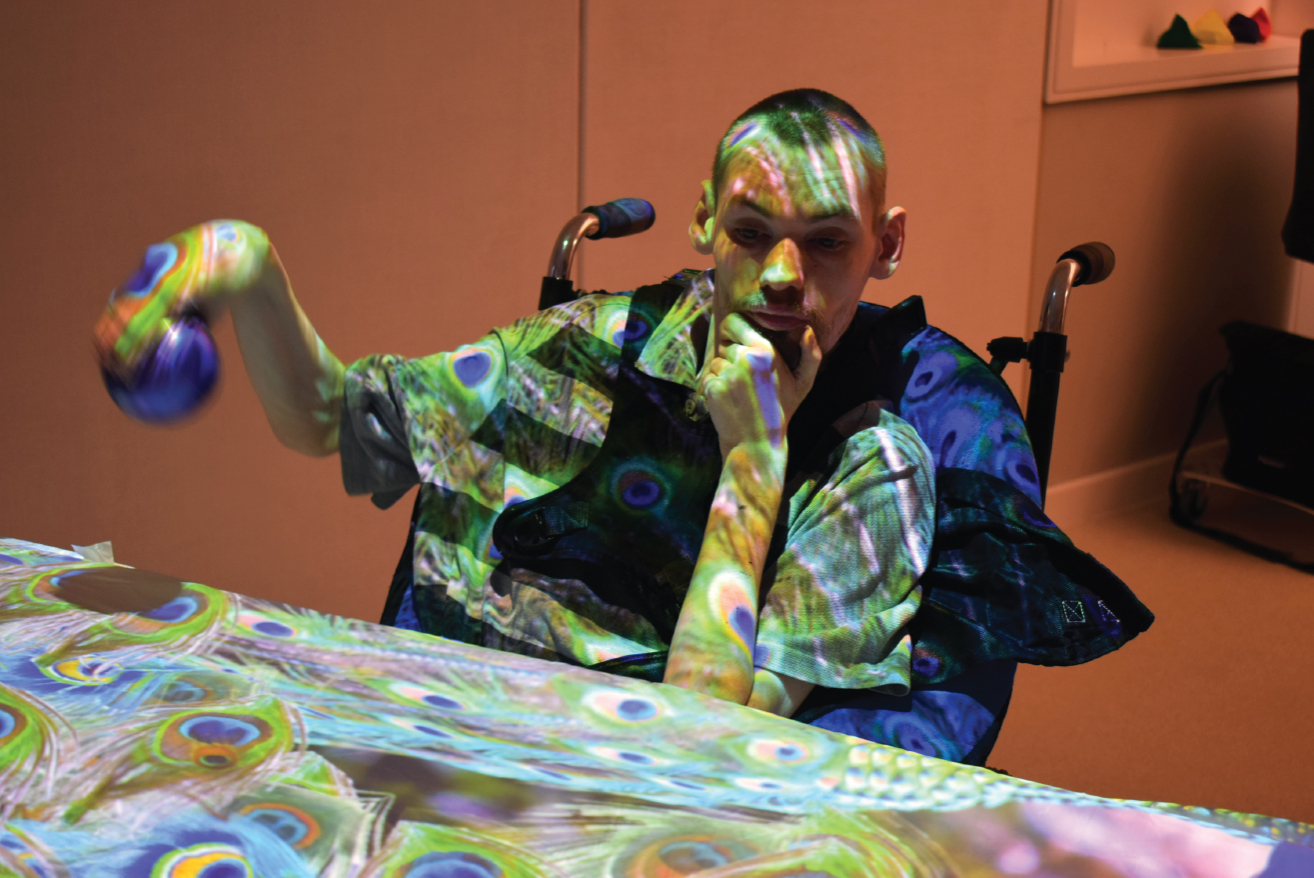
Real-World Applications of Bridge by Sphere
Bridge by Sphere isn’t a one-size-fits-all tool. It’s a flexible platform designed to adapt to diverse rehabilitation goals, patient populations, and care settings. Here are some of the ways healthcare organizations are using Bridge to transform the rehabilitation experience:
Pediatric Distraction & Engagement Rooms
Challenge: Children facing medical procedures or therapy often feel overwhelmed by clinical environments. Anxiety can quickly derail cooperation.
How Bridge Helps: Interaction-based activities turn sterile rooms into spaces filled with play, curiosity, and gentle distraction. Whether splashing virtual fish across a tabletop or following butterflies with a hand wave, young patients stay calmer and more engaged during treatment.
Neurological Recovery Rooms
Challenge: Stroke and TBI patients need targeted, repetitive movement to retrain neural pathways, but fatigue and frustration can cause drop-off.
How Bridge Helps: Adaptive visuals encourage gradual, purposeful motion. A simple reach or step can trigger interactive patterns, guiding patients through motor retraining exercises in a way that feels rewarding rather than repetitive.
Motor Skill Development Zones
Challenge: Traditional exercises often lack context or immediate feedback, making it hard to sustain motivation during long recovery periods.
How Bridge Helps: Bridge transforms therapy into goal-oriented challenges. Patients can “paint” with their movements, collect virtual objects, or navigate gentle obstacle courses—all while improving range of motion, coordination, and balance.
Pre/Post-Procedure Calming Suites
Challenge: Before or after procedures, patients may experience anxiety or agitation that affects recovery and participation.
How Bridge Helps: Soothing visuals and responsive soundscapes create an environment of calm and emotional safety. Patients can watch waves ripple across the floor or interact with slow-moving nature scenes, helping lower stress before treatment or while recovering.
Multi-Disciplinary Therapy Environments
Challenge: Rehab teams often work across disciplines—PT, OT, speech, behavioral therapy—but lack shared tools that support integrated goals.
How Bridge Helps: One platform can deliver activities that address cognitive, motor, and emotional objectives. Whether used in group sessions or individual care plans, Bridge helps teams collaborate while keeping the patient experience consistent and engaging.
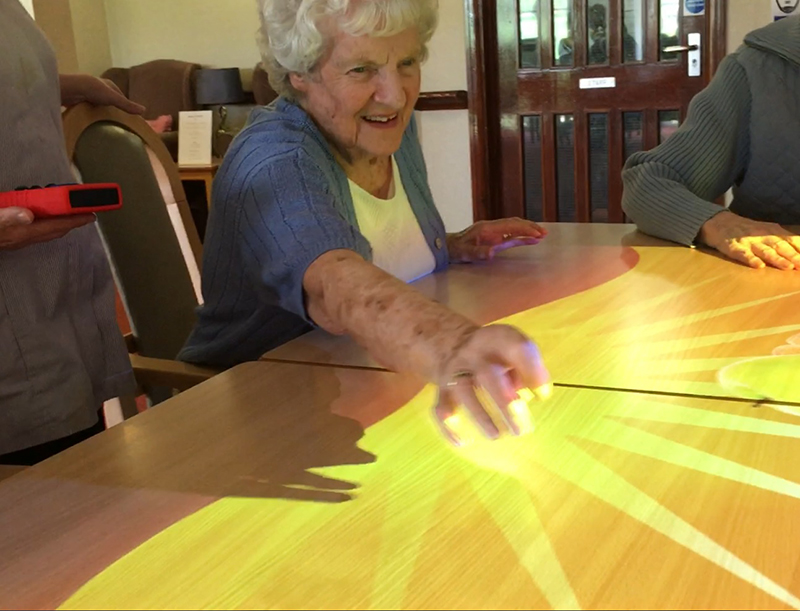
Outcomes That Matter — For Patients and Providers
When rehabilitation tools inspire patients to participate wholeheartedly, the results extend far beyond the session itself. Bridge by Sphere doesn’t just create a novel experience—it drives outcomes that improve recovery, reduce stress, and strengthen the clinician–patient bond.
For Patients
Increased Participation and Cooperation: Motion-activated activities feel less like treatment and more like exploration, motivating patients to engage fully and return willingly.
Reduced Anxiety: Calming visuals and predictable interactions help ease fears before procedures or during challenging rehabilitation milestones.
Enhanced Motor Engagement: Immediate feedback reinforces purposeful movement, supporting strength, coordination, and confidence.
Improved Cognitive Focus: For patients recovering from stroke, TBI, or neurodegenerative conditions, responsive visuals help retrain attention and cognitive processing.
Greater Emotional Well-Being: Moments of achievement and play restore a sense of control and joy that is often missing from traditional therapy.
For Providers
Easier, More Effective Sessions: Therapists spend less time managing resistance and more time facilitating meaningful progress.
Flexible Integration Across Disciplines: One system supports diverse treatment goals, from motor retraining to sensory modulation and cognitive rehabilitation.
Consistent Patient Experience: Whether used bedside, in a therapy gym, or in a pediatric room, Bridge provides familiar interactions that build trust and reduce overwhelm.
Minimal Training Required: Clinicians can launch activities with a simple remote—no complicated setup, no screens, no additional staff time.
In short, Bridge empowers care teams to deliver therapy that is not only clinically effective but human-centered, dignified, and motivating.

The Bridge Between Clinical and Human
Recovery is never just a clinical process. It’s an emotional, physical, and psychological journey that demands patience, resilience, and trust. For patients and providers alike, the difference between going through the motions and making real progress often comes down to one factor: engagement.
When therapy feels inspiring—when patients see their efforts reflected in calming visuals, playful challenges, and tangible progress—motivation grows. Participation increases. Outcomes improve. And care becomes something more than a set of appointments on a calendar—it becomes an experience of dignity, agency, and hope.
Bridge by Sphere was designed for exactly this purpose. It’s the bridge between treatment and transformation, between goals and achievements, between the clinical and the deeply human.
If you’re ready to explore how interactive projection can elevate rehabilitation in your facility, our team is here to help you build a space that motivates, calms, and empowers—one movement at a time.
Book a demo or schedule a conversation today.
